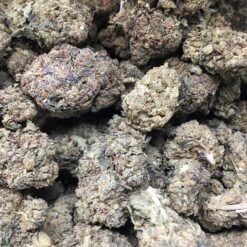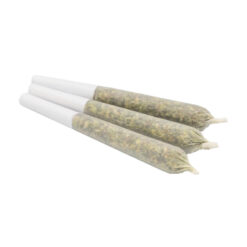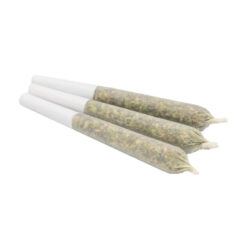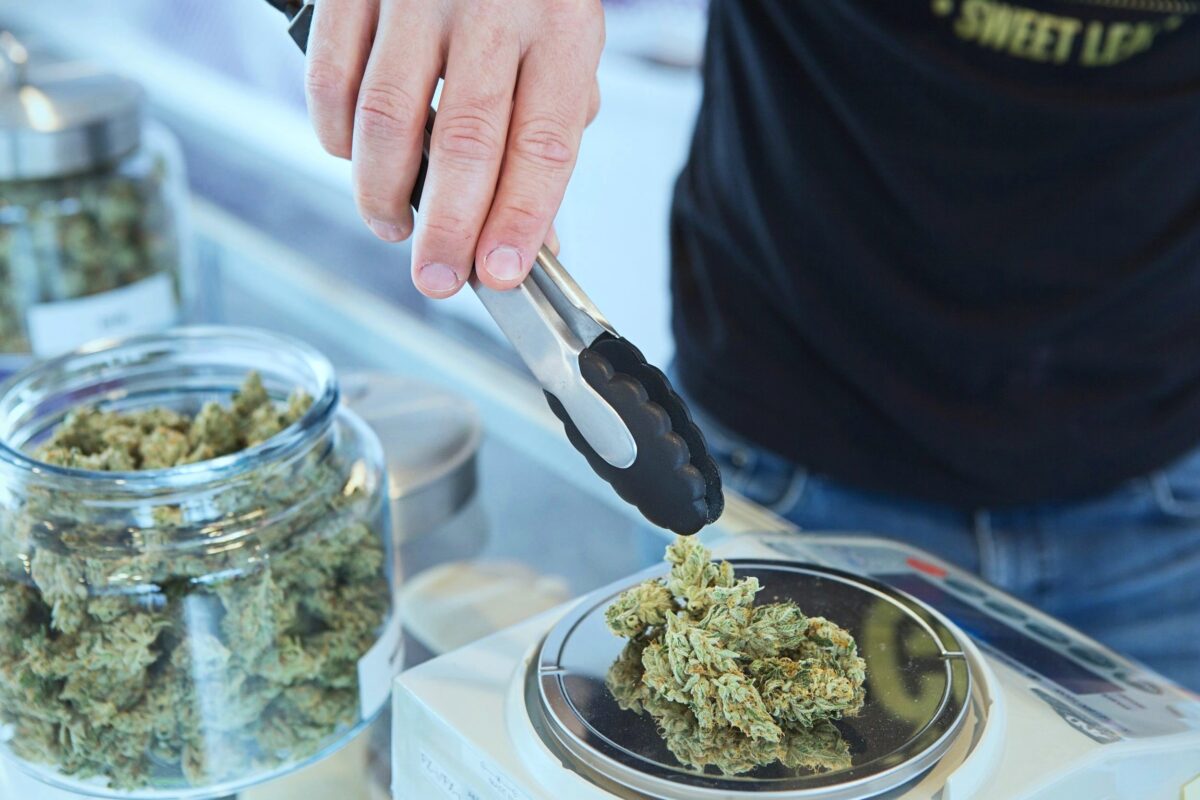Consumable cannabis products like gummies, mints, brownies, cookies, tinctures, beverages, and other edibles offer discreet and potentially prolonged effects. When consumed responsibly and with awareness of Edible dosing, they can be enjoyable and safe.
However, edibles can be unpredictable if not approached cautiously. It’s crucial to have a clear idea of the experience you desire. While overconsumption of cannabis won’t cause physical harm, it’s essential to avoid undesirable or uncomfortable effects by understanding the dosage of the product and determining your optimal edible dosage.
Chart Showing THC Dosage in Milligrams for Edibles

Keep in mind, several factors can influence how you experience edibles. Determining the right thc dosage and understanding your limits is a journey, as each person’s reaction to cannabis is unique.
While edibles from licensed dispensaries come with clear dosage information, it’s more challenging to gauge the potency of homemade ones. Continue reading to explore additional elements shaping your edible encounter.
Discovering your optimal edible dosage is a personalized process. Several factors, such as the type of edible, dosage amount, tolerance level, body weight, and metabolism, contribute to its effectiveness. It’s worth noting that two individuals can have vastly different responses to the same edible and dose—some may feel intense effects while others may feel none, depending on these factors. Begin with a small edibles dosing and gradually adjust until you find what works best for you.
Determining the Ideal THC Dosage for Desired Effects
The optimal dosage of THC-infused edibles varies based on factors such as individual tolerance, body chemistry, weight, and desired effects. Below are general dosage recommendations in milligrams (mg).

1 – 2.5 mg THC (microdose)
- Effects: Mild symptom relief (e.g., pain, stress), increased focus, minimal intoxication.
- Recommended for: First-time users or those seeking subtle effects.
3 – 5 mg THC (low dose)
- Effects: Increased symptom relief, mild euphoria, slight impairment in coordination.
- Recommended for: Recreational users or those seeking moderate effects.
10 – 15 mg THC (moderate dose)
- Effects: Effective symptom relief, noticeable euphoria, moderate impairment in coordination.
- Recommended for: High-tolerance users or those seeking stronger effects.
20 – 30 mg THC (high dose)
- Effects: Intense euphoria, significant impairment in coordination.
- Recommended for: Users with significant THC tolerance or specific medical conditions.
50 – 100 mg THC (very high dose)
- Effects: Severe impairment in coordination, increased risk of adverse effects.
- Recommended for: Experienced users or patients with serious medical conditions.
100 – 500 mg THC (extremely high dose)
- Effects: Severe impairment in coordination, heightened risk of adverse effects.
- Recommended for: Experienced users or patients with critical medical conditions requiring high doses.
Determining the Ideal Dosage for Your First Experience with Edibles
If you’re new to edibles, it’s prudent to follow the age-old advice of “begin low, take it slow.” This suggests initiating with a dose of 2.5 mg. Typically, 5 mg is regarded as a standard dose, making 2.5 mg a half-dose or microdose, often leading to mild effects with minimal intoxication or adverse responses, according to most users’ experiences.
Here is edible dosage guide for first-time consumption of edibles:
- Edibles available in dispensaries usually come in doses of 2.5 mg, 5 mg, or 10 mg, so it’s recommended to opt for gummies, mints, or similar edibles that can be easily divided for smaller doses.
- When purchasing edibles, ensure that each edible’s dosage is clearly labeled, helping you gauge their potency.
- Embrace the “begin low, take it slow” approach: Remember, it’s simpler to consume more later than to reduce your intake. Wait for at least an hour after consuming edibles, and if you haven’t experienced any effects or desire stronger ones after an hour, consider ingesting another 2.5 mg.
Exploring When Cannabis Edibles Take Effect
Edibles typically take between 20 to 60 minutes to start working, but this can vary due to factors such as metabolism, gastrointestinal health, time of consumption, and food intake. It’s advised to start with a small dose and wait at least 45 to 90 minutes before considering taking more. Rushing to take additional doses before feeling the effects of the initial one can lead to accidentally consuming too much cannabis, resulting in unpleasant experiences later on.
When consuming cannabis in the form of edibles, the body processes it differently than when smoked or vaped. The liver metabolizes the THC in edibles, converting it into a stronger form called 11-Hydroxy-THC. However, not all of this metabolite is efficiently absorbed, and digestion can also reduce its potency.
The duration of the effects of an edible varies depending on factors like dosage, individual tolerance, metabolism, and body chemistry. On average, a 5 mg edible might provide effects lasting 2 to 4 hours, with the peak occurring around 1 hour after consumption. Those with higher tolerance or faster metabolism may experience shorter durations, while individuals with lower tolerance or slower metabolism may feel the effects for up to 6 hours.
It’s essential to be mindful of the dosage when consuming edibles to gauge their strength and duration. This awareness helps in finding the optimal dose to achieve the desired effects without risking overconsumption.
Exploring the Impact of CBD and THC Levels in Cannabis-Infused Edibles
Combining CBD with THC can heighten the medicinal advantages of cannabis-infused edibles, aiding in conditions such as pain or anxiety, while mitigating the intensity of intoxication and its associated adverse effects like impairment and increased heart rate.
CBD interacts uniquely with our endocannabinoid receptors, partially mitigating the intoxicating impacts of THC, allowing users to experience the therapeutic benefits of cannabis with reduced impairment. Understanding the composition and CBD to THC ratio of edibles before consumption is crucial for consumers.
Edibles with a balanced CBD to THC ratio of 1:1 offer therapeutic effects with diminished impairment compared to those solely containing THC. For instance, someone who typically feels moderately impaired after ingesting 5 mg of THC may experience less or no impairment when consuming 5 mg of THC alongside 20 mg of CBD.
Dispensaries now provide a variety of edibles with diverse CBD to THC ratios, ranging from 2:1 to 20:1, among others. While higher CBD content in edibles decreases the likelihood of adverse intoxicating effects, overconsumption of THC, regardless of CBD levels, can still result in discomfort. It’s essential to verify dosing information on labels and seek advice from knowledgeable sources.
Regarding duration, edibles exert their effects for a more extended period compared to other cannabis consumption methods, peaking within 1-2 hours and gradually subsiding thereafter. Some users might experience fatigue once the effects wear off.
Can You Have Too Much Weed-Infused Edibles?
While no reported deaths from excessive cannabis consumption exist, consuming too many edibles can lead to an uncomfortable experience. Unlike opioids, cannabis doesn’t depress the respiratory system, regardless of dosage. Most cases don’t require immediate medical attention, but caution is crucial when ingesting edibles to avoid distress. They’re not suitable for everyone.
Which Types of Weed Edibles Produce the Strongest Effects?
Different edibles contain varied ingredients and formulas, so even with the same dosage, the effects can differ. Some edibles have faster onset times or better absorption rates. Typically, edibles start taking effect between 15 to 60 minutes after consumption.
Hard candies, pastilles like lollipops, gums, mints, and lozenges, as well as beverages, have quicker onset times because they’re primarily absorbed through the mouth’s tissues.
Chewy and sweet edibles like gummies, caramels, and chocolates have a moderate onset time as they need to be digested, although they digest more quickly due to their simpler ingredients.
Baked goods usually take the longest to take effect due to their density and the energy required for digestion and metabolism.

Is It Safe to Combine Weed Edibles with Alcohol?
While cannabis alone hasn’t caused deaths, mixing it with other substances can be risky. Alcohol, a depressant, decreases central nervous system activity. Moreover, alcohol acts as a solvent, potentially intensifying THC’s effects by aiding its quicker absorption into the bloodstream and brain. Recent studies also suggest increased accident risks when combining cannabis and alcohol.
Additional Advice for Safe Consumption of Cannabis Edibles
If you don’t notice any effects from an edible within an hour, consider having a snack, such as fresh fruit, to aid digestion and enhance absorption in your gut. Remember the importance of starting with a low dose and gradually increasing.
Even if you’re a regular cannabis smoker, your tolerance to edibles may be lower. Starting with a half dose of 2.5 mg is advisable. Wait at least an hour after consumption before deciding to take more.
For newcomers to cannabis, it might take 2-3 doses before feeling any effects. It’s recommended to stick to the same low dose three times, with intervals of 8 to 24 hours between attempts, before considering an increase.
Individual reactions to THC vary, so it’s normal if your experience differs from others’. Some may require larger doses, while others may be more sensitive.
In some instances, a significant dose of CBD (ranging from 50-200mg) without notable THC content can help alleviate the effects of a high-THC edible.
Considering the Influence of Mindset and Environment
Having a favorable mindset and being in a comfortable environment are crucial factors when consuming cannabis, particularly edibles. Your mindset (set) and environment (setting) significantly impact your cannabis experience.
Being in a state of anxiety or in an unsafe environment can lead to an unpleasant high, whereas being in a positive mood and a secure space can enhance your chances of having a positive high.
However, overindulging in edibles can still result in an unpleasant experience, regardless of a positive mindset and environment.
It’s important to stay hydrated while consuming edibles. Consuming an edible on an empty stomach can intensify the effects and lead to a quicker onset. Consuming edibles with a full stomach tends to offer more control and predictability over the experience compared to consuming them on an empty stomach.
Now that you’re aware of the ideal edible dosage for you, why wait?
 v7-Green Crack - Indica AA
5 × $40.00
v7-Green Crack - Indica AA
5 × $40.00 GasDank Quad Pre-Roll Pack
4 × $35.00
GasDank Quad Pre-Roll Pack
4 × $35.00 GasDank Pre-Roll Pack
2 × $10.00
GasDank Pre-Roll Pack
2 × $10.00




